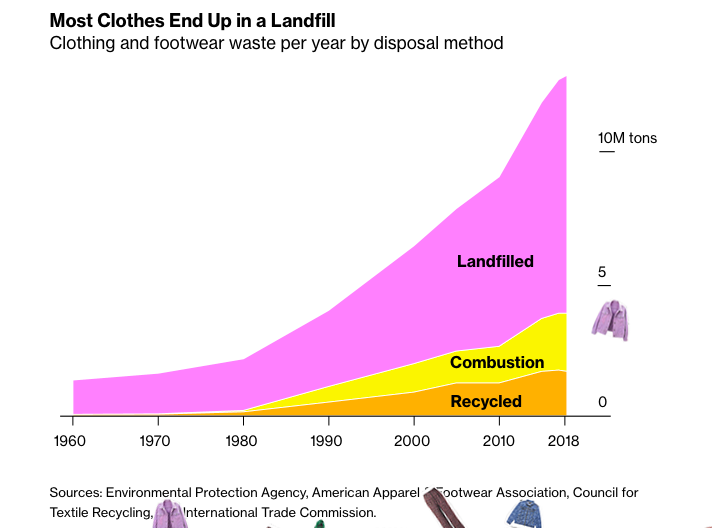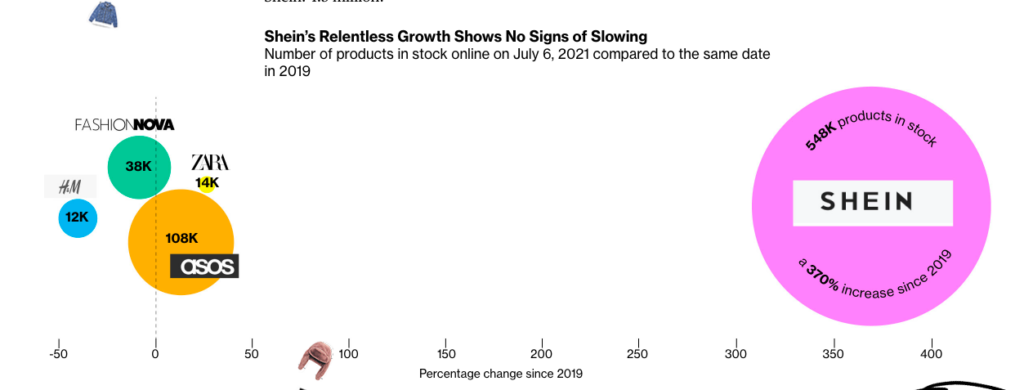FINESSE – Using AI to Tackle Overproduction of Clothes

AI can tell you how to be trendy and reduce waste in the process
“Fashion accounts for up to 10% of global carbon dioxide output—more than international flights and shipping combined, according to the United Nations Environment Programme”
When we think about the biggest culprits of climate change, we often don’t think about fashion. We don’t think about millions of us how buying clothes from Zara (which I also love to shop at) has a tremendously negative impact on the environment. While many retailers around the world have pledged to recycle clothing, ~87% of the fibre used in clothes is burned or sent to a landfill. Furthermore, less than 1% of clothing collected for recycling is actually used to produce new clothes.

The appeal that retailers such as Zara, Asos, Fashion Nova and Shein have for many consumers is that they are able to replicate styles from high-end designers that the average person cannot afford. Most people definitely cannot spend $3K on a Balmain dress, but they can spend $100 on the Zara knockoff that comes out less than a month after the dress has been debuted at a fashion week. While celebrities to some extent have always determined what is “trendy”, improvements in technology have made it possible to produce clothes much quicker. Social media has fed our need for “instant gratification” – people do not have the patience to wait 2-6 months to get the latest designs.
With trends changing at the drop of a TikTok video and multiple trends co-existing depending on what corner of the internet you are on, fashion companies have a hard time discerning what trends are going to blow up. Furthermore, fashion is not as homogenous as it used to be. Companies can no longer segment consumers just by age. For example, there may be over 10 strong trends within the 18-24 female demographic alone. The response has been to produce items that follow as many of these trends as possible. The result is an overproduction of clothing items that are poor quality and that many users wear a few times until the trend dies down. Anyone who is into fashion knows that fashion is a cycle. I’ve personally taken many of mother’s clothes from the 80s and 90s that have come back in style. The difference between clothes that were produced then and now is those clothes have lasted 30-40 years because they are made from high quality materials. Our need as a society to always be on trend has resulted in the overproduction clothes made from poor materials.

FINESSE tries to combat this problem by scouring the internet, analyzing various fashion trends, and using Artificial Intelligence (AI) and Machine Learning (ML) to determine which trends are going to take off – all before it even produces any items of clothing. The AI machines scan millions of comments across multiple platforms to understand general consumer sentiment about a trend. The company then creates 3 “looks” that it shares on its social media for consumers to vote on. Only the look with the highest number of votes is then produced. The voting process and social media campaign often creates a buzz and buy-in from consumers which results in the “look” selling out.
The company uses technology from companies such as CLO | 3D to simulate looks in a realistic way so that the company and its consumers can get an accurate idea of what the item of clothing will look like before it is produced. This is a drastic change from the industry practice of creating samples. By using this model, FINESSE is able to reduce the amount of waste and carbon emissions associated with the production of its clothes. The company works with 3 factories in China that it has thoroughly vetted in terms of innovation levels and labour practices. The business model is a win for factories as well who are able to avoid the process of creating multiple samples and are themselves under pressure to improve their practices with respect to the environment.
FINESSE is still a young company. It just raised its series A round in May 2022 and has received ~$16MM in funding. The company still has some changes that it needs to make as it scales if it wants to operate sustainably. The clothes retail for between $30 for an individual item and $115 for a full look. The price of these items indicates that the fabric being used is not the best quality. This is still “fast fashion” and the company is really only targeting the overproduction piece of the pie. The damage caused by the clothing industry is a massive challenge so it is unrealistic to believe that the company can tackle multiple layers at the same time. The truth is if FINESSE to looking to have a massive positive effect on the industry, they may have to license some of their technology to brands that have a bigger environmental footprint.
I do worry about how the fashion industry can tackle this problem given society’s need for a plethora options and instant gratification – seems bleak. Would Zara still be Zara if it didn’t have 10,000+ SKUs? I am happy, however, that companies like FINESSE are trying to use technology to solve the problem.
Sources:
- https://www.bloomberg.com/graphics/2022-fashion-industry-environmental-impact/?leadSource=uverify%20wall
- https://hypebae.com/2021/1/finesse-clothing-brand-fashion-trends-drops-vote-artificial-intelligence-sustainable-ramin-ahmari-interview
- https://www.crunchbase.com/organization/finesse-05d4/company_financials
- https://techcrunch.com/2021/01/27/finesse-launch-seed-funding/
- https://ww.fashionnetwork.com/news/Us-brand-finesse-uses-ai-and-customer-votes-to-determine-designs,1407870.html#:~:text=US%20brand%20Finesse%20uses%20AI%20and%20customer%20votes%20to%20determine%20designs,-By&text=A%20ready%2Dto%2Dwear%20brand,then%20submitted%20to%20customer%20votes.
- https://440industries.com/finesse-case-study-how-will-ai-affect-the-fashion-industry/



Really cool idea. It makes me wonder if they could also launch a styling service for customers as well – “we design the perfect look for you – using ML”. Because right now Finesse is in the business of “predicting trends”, but if they could also influence the trends, they could increase their “prediction” – almost in a self-fulfilling prophecy and being the industry maker.
So interesting, thanks very much for sharing Sultana. Question for you: what aspect of the business do you think creates the largest moat for FINESSE? Do you think it’s the sentiment analysis, or the voting and media campaign generation process? In regards to the former, I would think that other companies could duplicate these models or try to specialize in providing sentiment analysis to try and out compete FINESSE on this dimension… but I wonder if FINESSE feels it has some distinctive advantage here.
Thank you for this post, Sultana. Very interesting indeed. I do wonder though if this solves the problem… Are they using AI to bring the gap between demand and supply as well? or just in choosing which designs to produce?
To me it sounds they use AI like a cost saving solution for not having their own designers? They still have quite a bit of variety of models on their site and as you say, the price points are very low ($73 for a halter top, skirt and sweater) so super fast fashion, with a very niche style (by this I mean when the trend is out, if one continues wearing these clothes, they are definitely out of style).